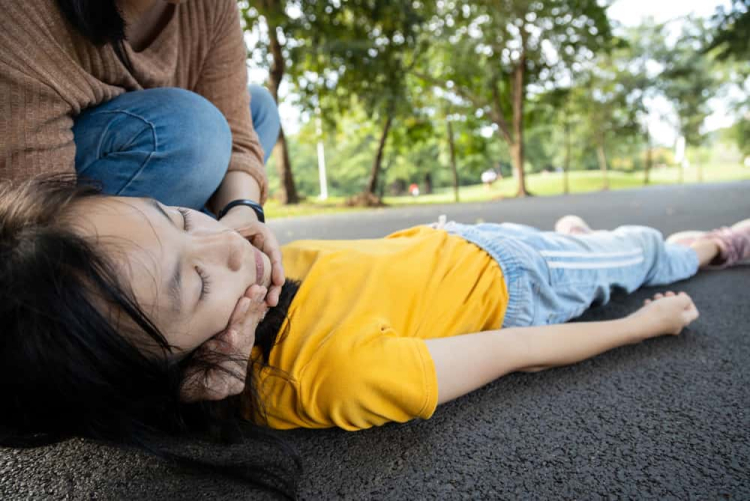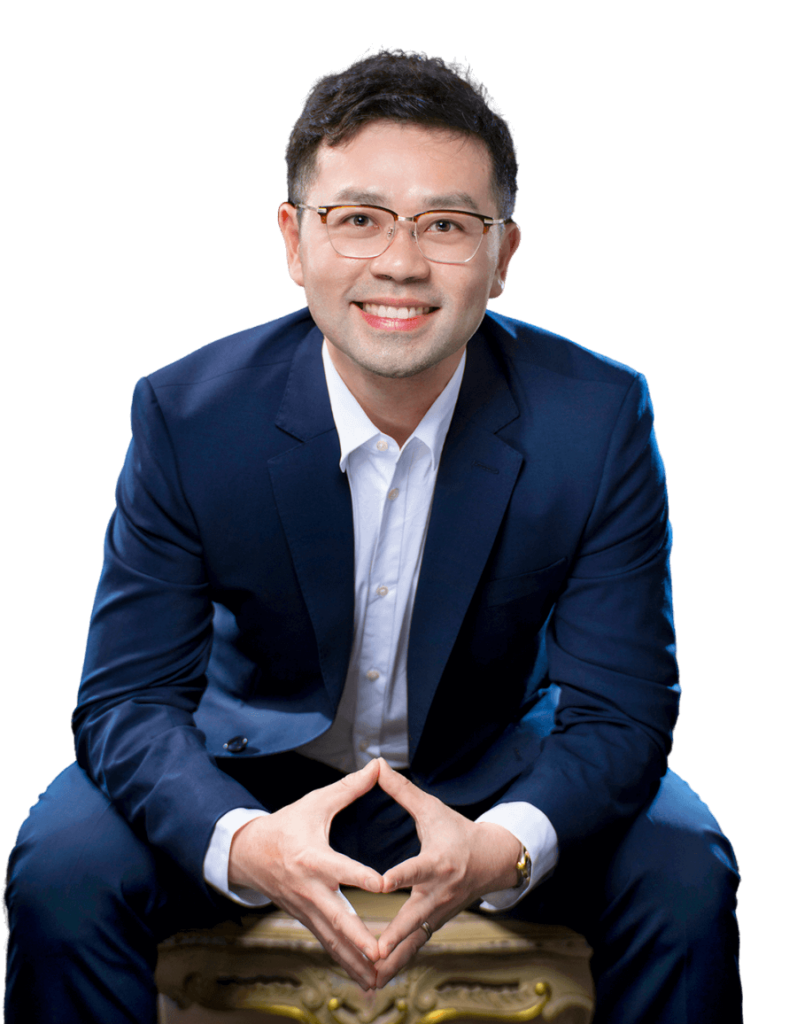What are Epileptic seizures?
Our brain cells communicate with each other through electrical signals. Epileptic seizures occur when there are disturbances in the electrical activity of these brain cells. Since the brain controls every function of the body, seizures can manifest in various ways. Children experiencing epileptic seizures may lose consciousness, have unusual sensations or feelings, or exhibit uncontrollable movements. They might even become stiff or floppy, fall to the ground, and shake.
What Are the Types of Epileptic Seizures?
Epileptic seizures can generally be categorised into two types: Generalised onset seizures and Focal onset seizures. Generalised seizures originate simultaneously from both sides of the brain, while focal seizures begin in a specific area of the brain.
A focal seizure can also start in one area and then spread to both sides of the brain; this is known as a “focal to bilateral tonic-clonic seizure.”
There are various types of both generalised and focal seizures. Below is the updated classification of epileptic seizures by ILAE 2024:

What is Epilepsy?
Epilepsy is a collection of disorders characterised by recurrent epileptic seizures.
Up to 5% of people will experience at least one epileptic seizure in their lifetime; however, not all of these individuals will go on to develop recurrent seizures or a diagnosis of epilepsy.
Epilepsy can begin at any age, and there are many different types of epilepsies. Approximately 1 in 200 children and young people are diagnosed with epilepsy. It is important to note that epilepsy is not necessarily a lifelong condition.
The rate of misdiagnosis for epilepsy is high. Up to 30% of children may be incorrectly diagnosed with epilepsy when they do not actually have it, while some individuals who do have epilepsy may remain undiagnosed or receive an inappropriate diagnosis.
What Types of Epilepsy are there?
There are various types of epilepsies – referred to as ‘epilepsy syndromes.’ An epilepsy syndrome is a group of signs and symptoms that typically occur together.
Many children have identifiable epilepsy syndromes, such as Childhood Absence Epilepsy (CAE), Self-Limited Epilepsy with Centro-temporal Spikes (SeLECTS), or Juvenile MyoclonEpilepsy (JME). Having a specific epilepsy syndrome diagnosis is essential because it can guide individualised management and provide valuable information about prognosis.
The following diagram illustrates the different epilepsy syndromes, although it is pretty complex!


What Causes Epilepsy?
The exact cause of epilepsy can vary, and it is not always clearly identifiable. However, several factors may contribute to the development of epilepsy. These factors can include structural, metabolic, infectious, immunological, and genetic causes, or a combination of these.
For example:
- Structural causes: Conditions such as brain malformations or neuronal migration defects, including lissencephaly, Tuberous Sclerosis, or brain tumors.
- Metabolic causes: Disorders such as Glucose Transporter Deficiency Syndrome (GLUT1 DS).
- Infectious causes: Conditions like congenital infections or bacterial or viral meningoencephalitis.
- Genetic causes: Chromosomal abnormalities, such Wolf-Hirschhorn syndrome
What Are The Common Associated Conditions?
Children with epilepsy may experience various associated conditions that affect their overall health and well-being. Some common associated conditions include:
Neurodevelopmental Disorders and Learning impairment
Children with epilepsy can have varying degrees of learning disabilities, ranging from mild to severe. Current research shows that the underlying cause of epilepsy can affect neurodevelopment. As a result, children and young people with epilepsy may also experience neurodevelopmental disorders, such as cognitive impairments, attention deficit hyperactivity disorder (ADHD), autistic spectrum disorder (ASD), and conduct problems.
However, certain epilepsy syndromes, like Childhood Absence Epilepsy (CAE) and Self-Limited Epilepsy with Centro-temporal Spikes (SeLECTS), are typically not associated with significant neurodevelopmental disorders.
If a child with epilepsy does show substantial developmental or learning difficulties, it is important to seek an assessment from a paediatric neurologist.
Visual & Hearing impairment
Depending on the cause of epilepsy, individuals may experience visual impairments such as squint (lazy eyes), nystagmus (involuntary eye movements), or cortical visual impairment. Regular eye examinations and appropriate interventions may be necessary.
Additionally, children with epilepsy may also have hearing impairment, which can result from congenital malformation, complications due to prematurity, or recurrent ear infections. Assessing hearing function and providing necessary interventions are crucial for effective speech and language development.
Behavioural and Emotional issues
Living with a long-term neurological condition including epilepsy can affect emotional well-being and may lead to behavioural and psycho-emotional challenges, such as anxiety, depression, and difficulties in social interactions.
A recent population study of children and young adults with epilepsy revealed that 13% were diagnosed with emotional disorders, 7.5% had conduct disorders, and 5% experienced mixed mental health issues.
Do children with epilepsy require additional support in school?
It is essential for every child with epilepsy to have their educational progress closely monitored. This way, any difficulties can be identified early, allowing appropriate support to be provided in school.
If children with epilepsy experience learning difficulties, they may benefit from additional support at school. Learning difficulties can impact their self-esteem and confidence and may lead to behavioural problems in some cases.
How to diagnose Epilepsy?
Diagnosing epileptic seizures and epilepsy in children requires a comprehensive evaluation by a paediatric neurologist. This process includes taking a detailed medical history, conducting a physical examination, assessing developmental milestones, and performing a neurological evaluation.
During your appointment, Dr Yeo will want to learn as much as possible about your child’s seizures. To assist with this, please provide the following information for the clinic appointment:
- Diary of your child’s seizures, including dates, times, and descriptions of events before, during, and after the seizures.
- Video recording of the seizures, if possible.
- The presence of someone who has witnessed your child’s seizures, or a written description from that individual regarding their observations.
Dr Yeo may recommend several tests to aid in diagnosing and managing epilepsy:
- Electrocardiogram (ECG): This test checks your child’s heart rhythm and is essential for ruling out any cardiac conditions that can produce symptoms similar to those of an epileptic seizure.
- Electroencephalogram (EEG): This is a painless procedure that records brain waves by placing several sticky sensors on your child’s head.
- Magnetic Resonance Imaging (MRI): This test provides detailed images of the brain to assess its structure.
- Additional tests may include comprehensive metabolic testing and/or genetic testing to identify any underlying neurometabolic or genetic conditions.
Early diagnosis and appropriate treatment are crucial for optimising long-term neurodevelopmental outcomes and providing the necessary support for children with epilepsy and their families.
How do we treat Epilepsy or Epileptic Seizures? What are Anti-seizure medications?
After your child has been diagnosed with epilepsy, Dr Yeo will work closely with you to develop a personalised treatment plan. This plan will consider your child’s lifestyle, circumstances, and your family’s preferences.
In addition, Dr Yeo will help you and your child create a personalised Seizure Action Plan. This essential document outlines steps to take when a seizure occurs and includes important information about your child’s medical history, epilepsy syndrome, seizure type, emergency medication plan, and other critical details to ensure your child’s safety during a seizure.
With all these factors in mind, Dr Yeo will assist you and your child in finding the most suitable treatment options:
Anti-seizure medication (ASM)
Taking oral medication, i.e. Anti-Seizure Medication (ASM), is the primary treatment for epilepsy. These medications help prevent or reduce epileptic seizures, thereby improving overall quality of life.
ASM works by stabilising the abnormal electrical signals in brain cells. Dr Yeo will assist you and your child in finding the right ASM that suits your needs.
During your consultation, Dr Yeo will discuss which ASM has been effective, or not effective, for your child’s epilepsy. He will also outline the advantages and disadvantages, such as side effects of each ASM, as well as explore other treatment options that may be appropriate if necessary.
Ketogenic Diet
The ketogenic diet is a specialised medical regimen designed to be significantly higher in fats and lower in carbohydrates than conventional diets. This therapeutic approach has been shown to effectively manage refractory or hard-to-control epilepsy, providing hope for those who have struggled to find control over their condition.
While the ketogenic diet holds tremendous potential, it is important to be aware of its possible side effects and complications. To ensure safety and efficacy, regular blood tests, urine tests, and annual ultrasound scan of the kidneys are essential to monitor for kidney stones. Embracing this diet can be a transformative step for many individuals, but it must be undertaken with careful medical oversight.
Vagal Nerve Stimulation (VNS)
Vagus nerve stimulation (VNS) may be an option for individuals with refractory or hard-to-control epilepsy. This therapy involves implanting a device, called a generator, beneath the skin of the chest. Fine electrical wires connect the device to the vagus nerve, which runs along the neck. The generator modulates the electrical signals of the vagus nerve, allowing the signals to reach the brain.
Epilepsy Surgery
Epilepsy brain surgery may be considered for certain types of refractory seizures. There are various options for epilepsy brain surgery, including focal resection, corpus callosotomy, and hemispherectomy.
What are the Safety Considerations for Children with Epilepsy?
It is generally advised to encourage children and young people with epilepsy to engage in normal activities as much as possible while minimising risks through sensible precautions. Risk assessments should be tailored to each individuals’ specific circumstances.
Many children and young people with epilepsy may encounter restrictions in their activities, often due to concerns about potential injuries or life-threatening events if a seizure were to occur.
The following situations pose the highest risks:
- Water activities, such as swimming
- Heat-related activities, such as cooking
- Activities involving heights, such as rock climbing
- Traffic-related situations, such as driving a car or biking
If you have any further questions, you can schedule an appointment today with Dr Yeo.
References
Dr Yeo is the Course Director of BPNA (British Paediatric Neurology Association) Paediatric Epilepsy Training (PET) for Singapore & South East Asia region.
Dr Yeo’s recent peer-group review journal publications and relevant articles regarding Epileptic Seizures & Epilepsy:
Yoon S, Goh H, Foo CP, Kao MIM, Hie SL, Chan SL, Krishnappa J, Ngoh ASF, Ling SR, Yeo TH, Chan DWS. Parents’ priorities for decision-making of pediatric epilepsy treatments and perceived needs for decision support in multi-ethnic Asian clinical setting: a qualitative analysis. Epilepsy Behav. 2022 Oct;135:108880.
Kumar P, Lim A, HAzrirah SN, ChuaCJH, Ngoh A, Poh SL, Yeo TH, Lim J, Ling S, Sutamam NB, Petretto E, Low DCY, Zeng L, Tan EK, Archachaisri T, Yeo JG, Ginhoux F, Chan D, Alabni S. Single-cell transcriptomics and surface epitope detection in human brain epileptic lesions identifies pro-inflammatory signaling. Nat Neurosci. 2022 Jul;25(7):956-966.
Rr P, Douch C, Aan Koh MJ, Lai AHM, Lim CT, Hartley L, Thomas T, Yeo TH. Speckled brain lesions in Incontinentia Pigmenti patients with acquired brain syndromes. Eur J Paediatr Neurol. 2021 Jul; 33:106-111.
Krishnappa J, Ngoh A, Hong YT, ChunLiang C, Derrick CWS. Unique Severe HyperEkplexia-Like Apneic Events (SHELAE) Improved by High-Dose. Child Neurology Open. January 2021.
Hamilton R, Yeo TH, et al. Sensitivity and specificity of the light-adapted ERG in suspected neuronal ceroid lipofuscinoses (NCLs). 54th International Society for Clinical Electrophysiology of Vision Symposium; Aug 13–18, 2016; Singapore. Documenta Ophthalmologica 133 (1S); 35–36. DOI 10.1007/s10633-016-9548-8






